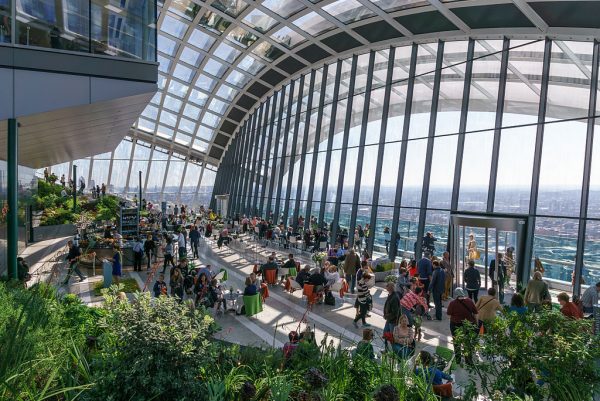The floorboards of Nijo Castle in Kyoto emit chirps as people pass through the hallways. The acoustic disturbance is louder than old boards creaking and occurs very much by design. So-called “nightingale floors” feature nails intentionally allowed to rub and squeak, creating a passive security device to alert residents of nighttime intruders.
Of course, most of the time architects and engineers work to eliminate or at least control sounds, reducing echoes in classrooms or modulating reverberation in concert halls. But in environments that are harder to manage, like the open-air public spaces around big buildings, acoustic effects can be less predictable.
When One World Trade Center was under construction, for instance, passersby observed (and recorded) what has been described as an eerie hum, whistle or wail issuing from the unfinished building.
When Beethem Tower in Manchester was completed, its upper louvers made noise in the wind, akin to a “middle C on the piano.” Various fixes have been attempted, including dampening foam and wind-redirecting aluminum additions, but the building still wails during storms. The building’s architect has apologized for the noise, something he has a great deal of familiarity with as the owner of the penthouse unit.

In some instances, the effects can be heard inside of a building as well. Elevator passengers in London’s infamous “Walkie Talkie” tower (40 Fenchurch Street) have reported loud whistling sounds from the Carbuncle Cup-winning structure. The apparent cause: pressure differentials between the main levels and “Sky Garden” above.
Sounds have different causes depending on the building, which can make their origins hard to pin down. Sometimes, explains Kelsey Campbell-Dollaghan of Gizmodo, “wind passes over an aperture—like a bottle—it creates an oscillating vortex that creates pressure inside the aperture. If the speed of the wind matches the frequency of the air inside, it makes a noise” — this phenomenon is known as a Helmholtz Resonator. “But there are other aural phenomena, too,” he continues. “Aeolian tones for example, which occur when wind passes over a sharp edge, like a louver or wire.”
In some cases, potential acoustical problems can be designed out of the equation — in others, they are hard to predict in advance then end up getting fixed after a structure is completed. But retrofits are expensive, so designers would do well to look at (and listen to) existing examples in hopes of at least avoiding worst case scenarios.



Leave a Comment
Share